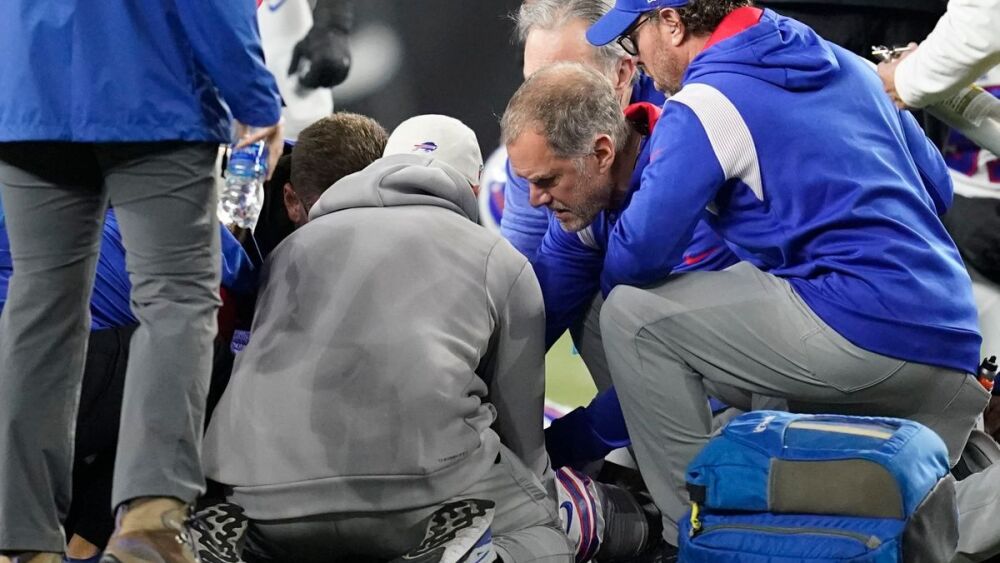The collapse of Buffalo Bills safety Damar Hamlin in front of a national audience on live television stunned millions, and left players, fans and viewers in shock.
As medical personnel rushed to help the 24-year-old, who suffered a sudden cardiac arrest (SCA), ESPN cut away from the chaos – a move that Bob Davis, a journalist and former paramedic, didn’t agree with.
Davis, who wrote a series of articles for USA Today in 2005 examining EMS across the country, wrote in a social post that the incident was a chance for millions of Americans to see what a sudden cardiac arrest looks like, and understand the urgency of receiving emergency care.
“When a victim is lucky enough to be near people who witness the collapse, they are extremely lucky when those ‘bystanders’ recognize the urgent need for CPR and an Automated External Defibrillator (AED),” Davis wrote. “Tragically, people often don’t get it, so they dial 911, then stand around looking at each other anxiously until rescue crews arrive.”
Hamlin’s collapse, he said, gave attendees at the game a unique look at what SCA looks like, how to recognize it, and, ultimately, what to do: “If you saw Hamlin collapse, you now know what sudden cardiac arrest looks like. It looks like fainting. The person drops, they may gasp a few times for more air, then they are still – lifeless.”
He continued: “Had ESPN been able to provide play-by-play commentary, the public would have seen how simple it is to save a life. How pushing on the chest was moving blood. How the pads applied to the chest would determine if a shock was needed. Then, as everyone was told to ‘clear’ and not touch Hamlin, how the simple push of a button delivered the only thing in the world that could return him to a normal life – a defibrillator shock.”
Davis’ words were championed by fellow medical professionals, including Tom Bouthillet, battalion chief of EMS for Hilton Head Island Fire Rescue.
“I understand why ESPN cut to a commercial,” Bouthillet wrote in a social post sharing Davis’ comments. “On the other hand, did they inadvertently deprive millions of viewers the opportunity to witness how a life can be saved using CPR and defibrillation? Maybe if Damar survives this event, the footage can be released, metrics like time to recognition, first compression, and first shock can be measured, and this can become a teachable moment, beyond the platitude, ‘Learn CPR!’”
Read more:
Rapid Response: Paramedics get ROSC as world watches NFL player’s on-field treatment
When Buffalo Bills player Damar Hamlin collapsed on the field in cardiac arrest, he received out-of-hospital BLS and ALS care from team personnel and EMS before transport to the hospital
Read more
- Rapid Response: Paramedics get ROSC as world watches NFL player’s on-field treatment
- ‘Outstanding response’: EMS praised for quick treatment of downed Buffalo Bills player
- Fire, EMS agencies urge CPR training in wake of NFL player’s mid-game medical emergency
- After player’s cardiac arrest, NFL releases its emergency medical procedures
- EMS leaders, providers respond to Buffalo Bills player’s collapse, on-field treatment
- NFL player collapses mid-game, receives CPR, ambulance rushed on field




